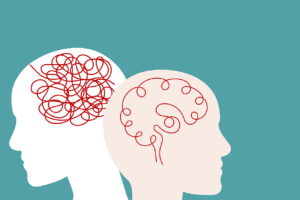What do grandads and Great Danes have in common?
People are living longer than ever before. In fact, it’s estimated that by 2050 over 24% of the world’s population will be age 65 or older. This is an unprecedented situation in human history and we are frighteningly unprepared for the economic, health care and social impact of this massive demographic shift. Osteoarthritis, sarcopenia, osteoporosis and other musculoskeletal diseases are significant health issues in old age. For example, the annual direct medical costs of treating osteoporotic fractures total $13.8 billion. Increased mortality, pain, disability, depression and loss of independence are well-documented consequences following musculoskeletal injury in elderly people. Although people are living longer (increased lifespan), this has not been accompanied by an increase in the number of years of life without the burden of age-related disease (healthspan).
Interestingly, there has been an unprecedented amount of very new and impactful discovery leading to a deep understanding of cellular mechanisms that drive aging. We know now that what we once thought was irreversible (aging), may in fact be reversed or significantly delayed using new molecules and therapeutic approaches that specifically target and destroy aging cells allowing for tissue regeneration and prolonged organ/tissue health.
However, despite huge advances in our understanding of cellular mechanisms that drive aging, and various therapeutic molecules that can reverse these changes, there has been little to no translation of these understandings toward meaningful “anti-aging” therapies for human or veterinary patients. This is due in part to the fact that laboratory animal models fail to mimic spontaneous diseases of aging very well. We are now “stuck” in a translational chasm where technology and medical advances are happening at top speed, but very little is being translated into widely available therapies in either human or veterinary medicine.
As translational researchers, we have learned through both cancer and orthopedic research that companion dogs are a very effective model for human disease, and we have barely begun to recognize how valuable the study of canine aging will be to translate interventions for significant improvements in human and canine healthspan. No other animal model shares our homes, lives in our environments or develops aging diseases naturally like dogs. Dogs receive excellent health care into old age, develop diseases of aging just as humans do, and are more similar to humans genetically than laboratory mice or other research models. What would take decades to study in a human population can be studied in 6-9 years in companion dogs. Importantly, body size in dogs is associated with lifespan- unlike cats or other domesticated animals. Giant breed dogs age less successfully than small breed dogs, resulting in short lifespans and healthspans. As a result of this natural divergence in lifespan in dogs, and the fact that dogs naturally develop diseases of aging (osteoarthritis, muscle mass loss, frailty etc.), we now have an pivotal opportunity to effectively translate new discoveries in anti-aging research to human populations, while at the same time helping dogs age more slowly and in greater health.
How can you get involved?
We are seeking funding for clinical trials to reverse and slow aging in companion dogs as a means to develop comparative studies in human aging research. For more information, please contact [email protected] Director, CSU’s Columbine Health Systems Center for Healthy Aging.
ABOUT THE AUTHOR
Nicole Ehrhart, VMD, Director, Columbine Health Systems Center for Healthy Aging, Professor and Director of the Comparative Musculoskeletal Oncology and Traumatology Lab, CSU Department of Clinical Sciences





